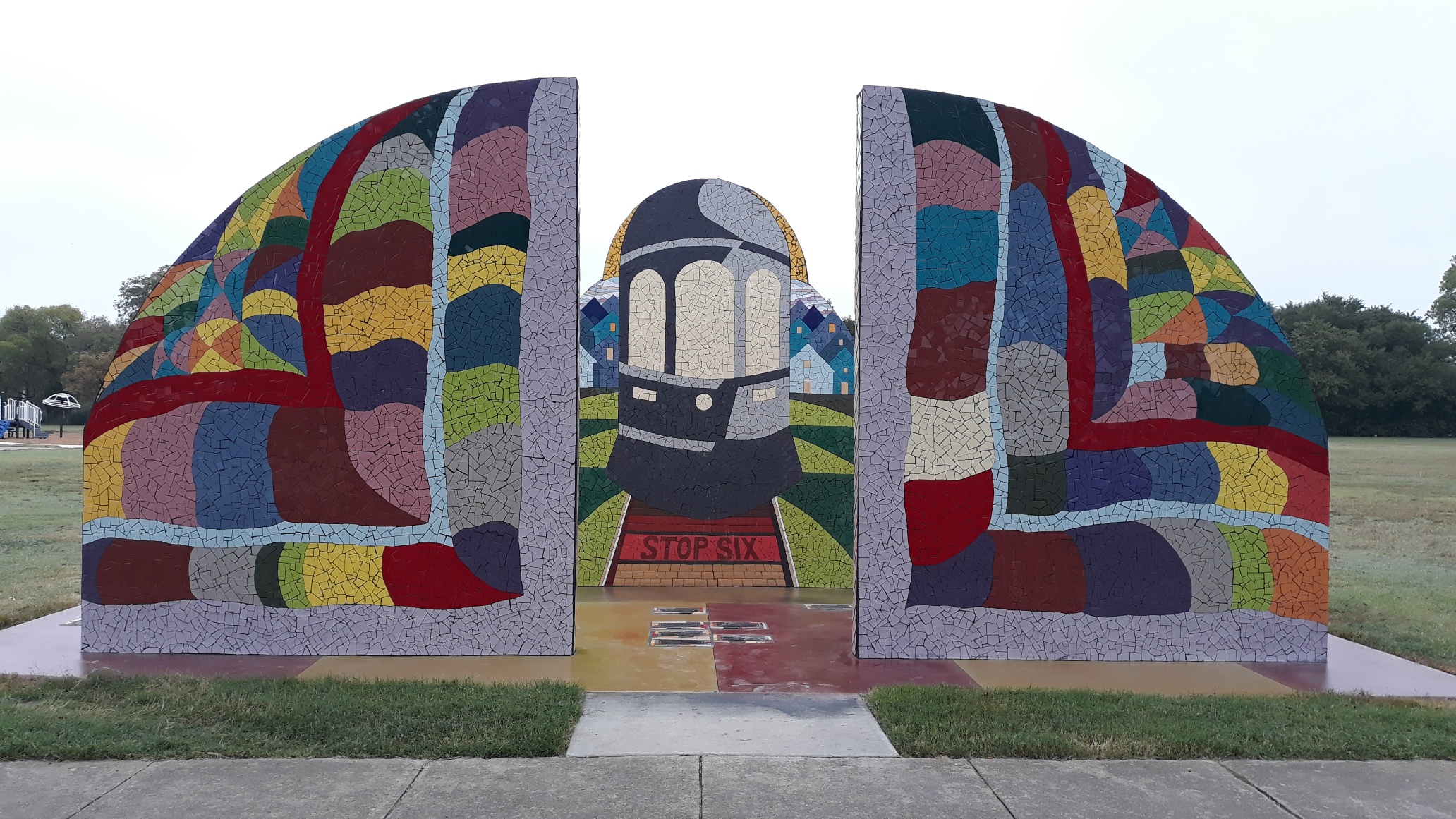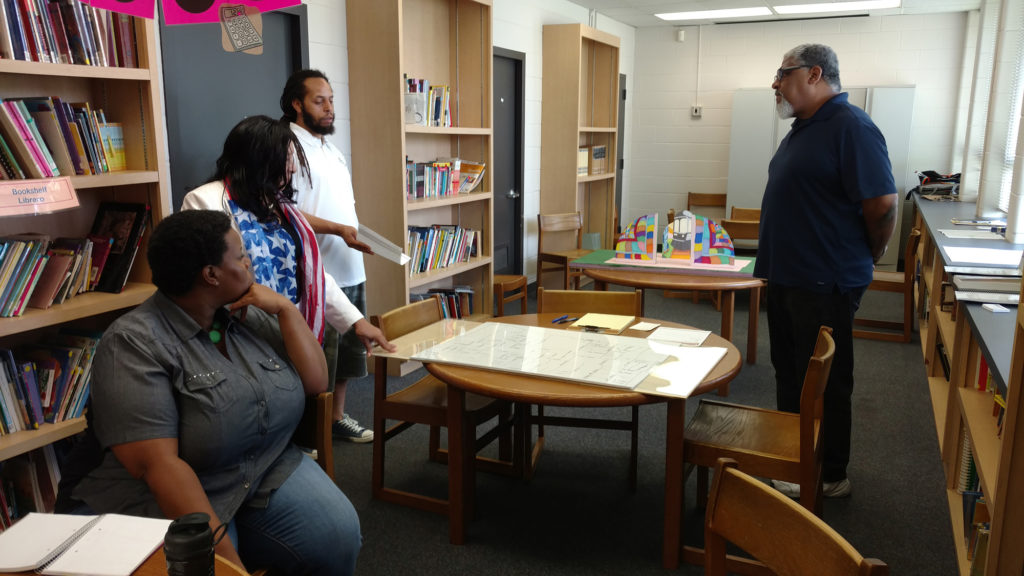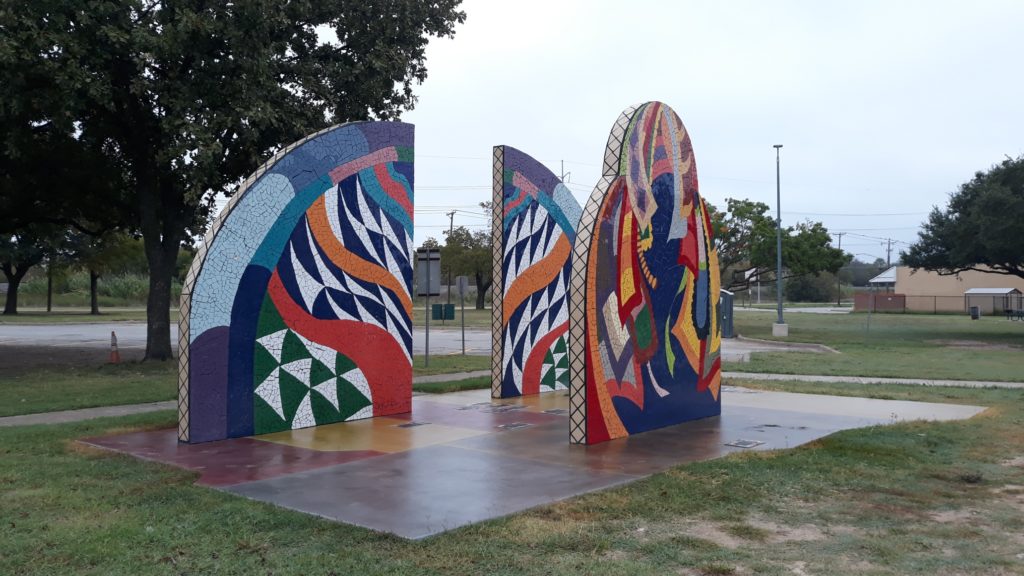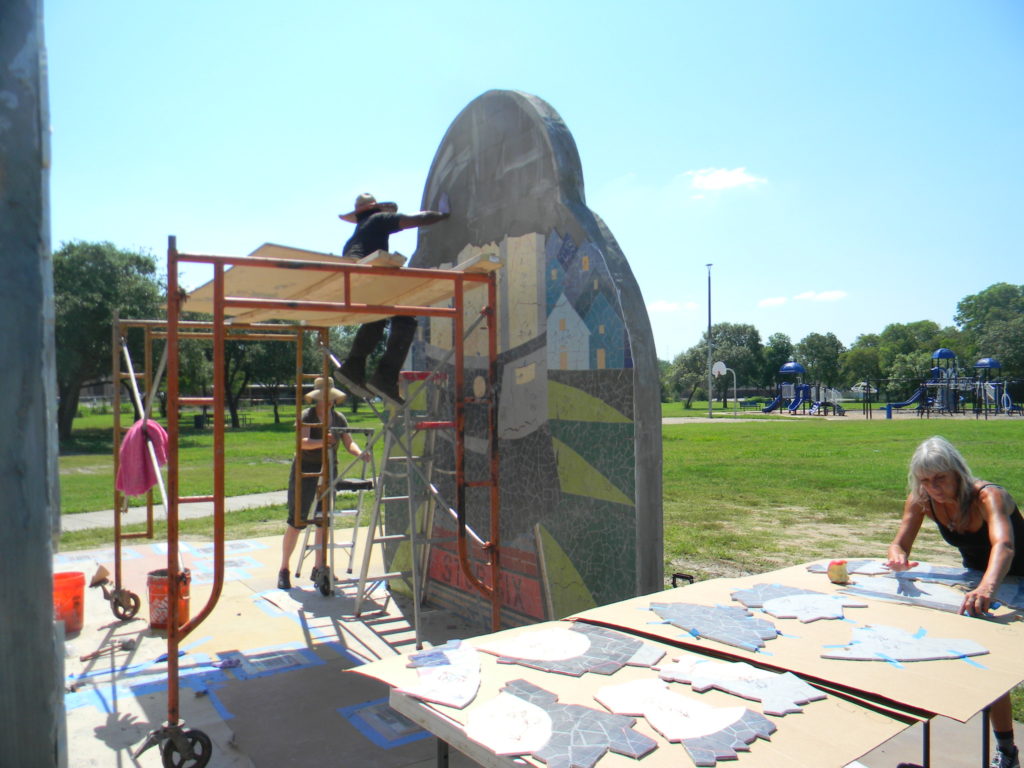Feedback is an important part of a public art project, but often, public input comes with many divergent viewpoints. How did you give all comments consideration while developing a cohesive design?
Comments and viewpoints that are communicated by many people, especially over several occasions, carry more weight with me. A little local reconnaissance prior to discussions usually gives me a heads-up on any “hot button” or controversial issues that are currently or historically at play in a community. That said, if there are “hot button” or more difficult issues at play, they will come out in these dialogues whether the artist wants to deal with them or not. Prior research helps you to be prepared to respond to, incorporate, massage or, if necessary, deflect viewpoints that are inconsistent with or detrimental to the direction, integrity, intent, or overall objectives of the project. It’s always a case-by-case situation, but the main thing is all viewpoints must be genuinely listened to and given room to fully be expressed, even if they are not going to be incorporated into the design.
Though artwork often reflects the time in which it was made, how did you consider the future of your public art in the area/community it serves? What were your concerns when considering how the work would grow with the community over time?
This issue is pertinent now more than ever. Historically stable communities are falling prey to gentrification or other forces resulting in dramatic changes in its demography and character. Interurban and interregional migrations are increasing due to economic and political forces beyond the control of community members. While all communities will change over time to some degree in response to normal social and environmental conditions, the issue is more acute now due to the aforementioned factors. My approach is to find ways to express both celebration and commemoration into the design of my public art works. Celebrate what has been and what is with the conceptual understanding that it may one day be a proud and lasting commemoration of what a great community was but no longer is. One clarification: an important function of some painted community murals to respond to an immediate issue that is urgently impacting a community at that moment that may not be as relevant in future years, and these murals are not necessarily meant to have permanence over time.
What’s the biggest challenge/reward working with a community collaboratively?
The biggest challenge for me when working with a community is encountering contentiously differing views or objectives from vying constituencies of community members. These conflicts are almost always beyond the artist’s ability to resolve and create a challenge of finesse that usually has mixed reactions. In those cases, I try to prioritize the most primary audience if possible, or the people who will be looking at and living most closely with the artwork every day. Still, this is a case-by-case situation. My biggest reward is when the artwork is dedicated. The event must represent a handing over of “ownership” and stewardship of the artwork to the community. By nature, these ceremonies will always showcase local political figures and leaders, but it is important that they not be the focus of the event. The dedication should be a community “party” that is a celebration of the people living there and the role the artwork will hopefully play in their daily lives and the lives of their progeny. When the dedication works how it should, it is the most rewarding moment of a collaborative community project.





